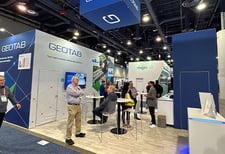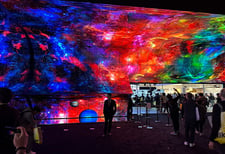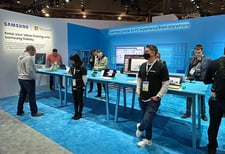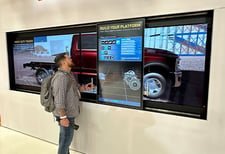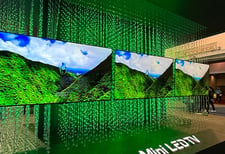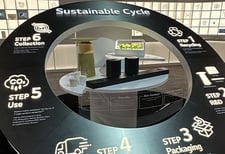There was so much to see and experience at CES 2023; after three full days walking the show floor, taking it in can be overwhelming! This is a familiar feeling for exhibitors when planning their next trade show. So, I’ve taken time to digest the variety of technologies and trends from CES and distilled them in a way that’s easy to understand and implement in your exhibiting plan.
Here are the top five technologies we will see more of in 2023 at trade shows worldwide.
AR / VR
A resurgence of Augmented Reality and Virtual Reality (AR/VR) is upon us. The usual suspects, including HoloLens, HTC Vive, Oculus VR, and Gear VR, are returning with more streamlined devices that are wireless, less invasive, have a longer battery life, and combine real and virtual environments.
Exhibit digital activations now have better graphics, better software, and integrations with other technologies to make the production process more efficient, cost-effective, and multi-purpose. Technology adds another level of content and storytelling for your brand. Often there is so much content that we want to convey, and these technologies compress it in fun and engaging ways to allow attendees to explore and choose their own adventure.
Be sure to leverage physical points within your exhibit to add to the experience. Use the technology as a supporting feature but avoid making them the focus of your exhibit, as this may look gimmicky and need more depth. Instead, use them as activations throughout your exhibit to support your brand message and enhance the experience of your attendees.
Tip: Repurpose this activation by bringing it to your corporate offices where visitors can continue to experience it. You can also update the brand messaging and experiences for new objectives.
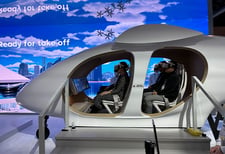
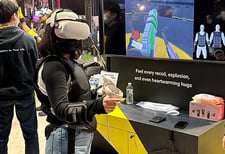
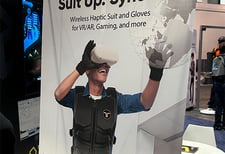
Touchscreens
Many exhibits at CES leveraged touchscreens to tell their stories. While this is not a new concept, the approach has changed. Instead of simplified touchscreens with PowerPoint presentations or PDF slides, animation and motion graphics have taken touchscreens to new heights. Bringing the attendee into the story is vital as well as giving them ways to explore at their own pace and with their own decisions. The story must be curated appropriately to convey the core messages of your exhibit. Consider what the goal is for your exhibit and apply that to the touchscreen experience. Is it to create brand awareness? Is it to promote or launch a new product? Is it to generate leads and potential sales? Asking these questions will help create a strategy for your story that translates into the screen.
Tip: Long messages and heavy content will scare your attendees away. Remember, people walking the trade show floor don’t have much time and they are constantly bombarded with distractions. Materials such as white papers, brochures, and product descriptions should be links that can be quickly sent to attendees’ mobile devices. For the in-person exhibit experience, keep your messaging simple, quick, and entertaining. Less is more.
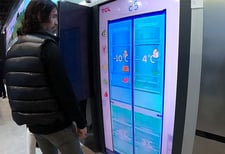
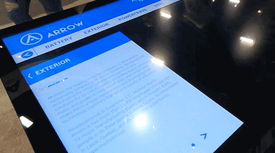
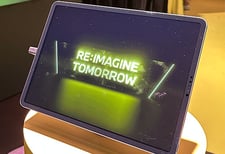
Hand-tracking cameras and screens
This is my favorite new technology trend. Why? Because it incorporates tracking cameras positioned near or on top of an LED screen that detect and track your hand movements. This means that you can have the same experience from a touchscreen without having to physically touch the screen. Do you remember the scene in the movie Minority Report where Tom Cruise appears to be moving different pieces of media without having to touch anything? Well, that technology is here. You don’t even need to wear a glove to track your hand movements. The camera identifies your hand and moves with it. This is a great way to layer different pieces of content and let attendees experience it at their own speed.
Development of these activations is much easier and more cost-effective than AR/VR. Still, it allows you to explore more content creation with less production time and without leveraging 2D and 3D designers.
Tip: This is a great way to get creative and use motion graphics and design animations that keep the attendee wanting more and seeing where the story goes. Feel free to include video and other media assets. The more curated content you create, the more time attendees spend interacting with your brand. Work with your creative and design teams on a story and use the same elements in your exhibit as your touchless screen so the attendee will feel part of the same story with or without screens.
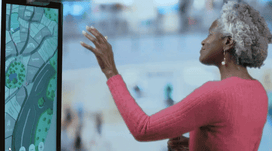
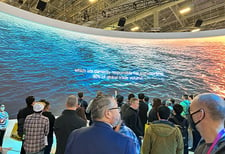
Beacons & RFID
For all digital activations, one of the primary benefits of using them is you can collect data and analytics that will help you determine what worked and what didn’t work in your exhibit. This information is key to planning your exhibit marketing strategy and measuring ROI, as well as improving upon your experience for next time. Beacons and RFID technology will provide the data needed to better understand the attendee journey. This can be achieved with in-booth devices such as motion-tracking cameras and wearables. Some trade shows offer the option to have RFID sensors incorporated into the attendee badges so their scanners placed strategically around the trade show floor and within an exhibit can tell you how the attendees are moving, where they are spending time, and which exhibits are visited the most and the least.
This technology can be used anonymously or for specific attendees with their consent. Make sure to understand the laws and regulations in the region where you’re exhibiting and your company’s privacy policy to ensure you can legally collect this information while at the trade show.
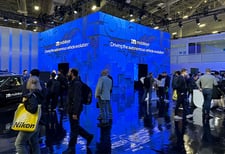
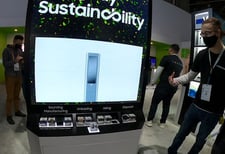
Tip: One specific technology that I find helpful is heat maps. These are mats placed under your exhibit and connected to the system's database to track steps and show where attendees spend time in your exhibit. The attendees don’t need to wear devices – you are simply tracking steps. This information is live. At the end of the day, you can review it with your team and make decisions on changes to the configuration for the next day at the show. If you’re working with modular exhibits like the ones available at Skyline, you can easily reconfigure your exhibit overnight.
Transparent LED screens
Transparent LED screens started appearing about 5-7 years ago but have yet to get much attention. This year is different, and brands, including Samsung and LG, are launching new screens. They have a transparent background so when users are not watching TV, it becomes part of the décor and merges nicely with the environment around it.
For trade show purposes, this has been used primarily for product showcasing. It’s an easy way to create content that tells the story of a product with specs, graphics, and demos, all virtually. This reduces the need for space to showcase all different products, as you can include multiple products in the same area. Attendees will appreciate sorting through many products simultaneously, with high-definition content that displays the products in a more immersive way. This allows you to include layers in the real world by adding physical items behind and around the screen to enhance the story of your product.
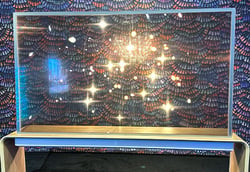
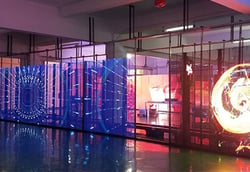
Tip: Play with graphics! Using your design elements on the exhibit will help you showcase the content on the transparent LED with a punch. It's a 3D element that will engage attendees by merging the screen's background with live media on it. Combining textures, colors, and shapes will tell a more robust, interactive story.
At Skyline, we are always finding the best technologies to support exhibit activations that amplify brands and enhance the attendees’ journey. We are testing, prototyping, and launching activations that support your brand’s story in many ways. All technologies must be used smartly and position your attendee in the story's center.
I’m sure that throughout 2023 we’ll see more of an evolution of these technologies and new ones to keep engaging with attendees at every level.
We’re happy to explore technologies for your next activation! Reach out to us today to connect with one of our experts.
More photos from International CES
